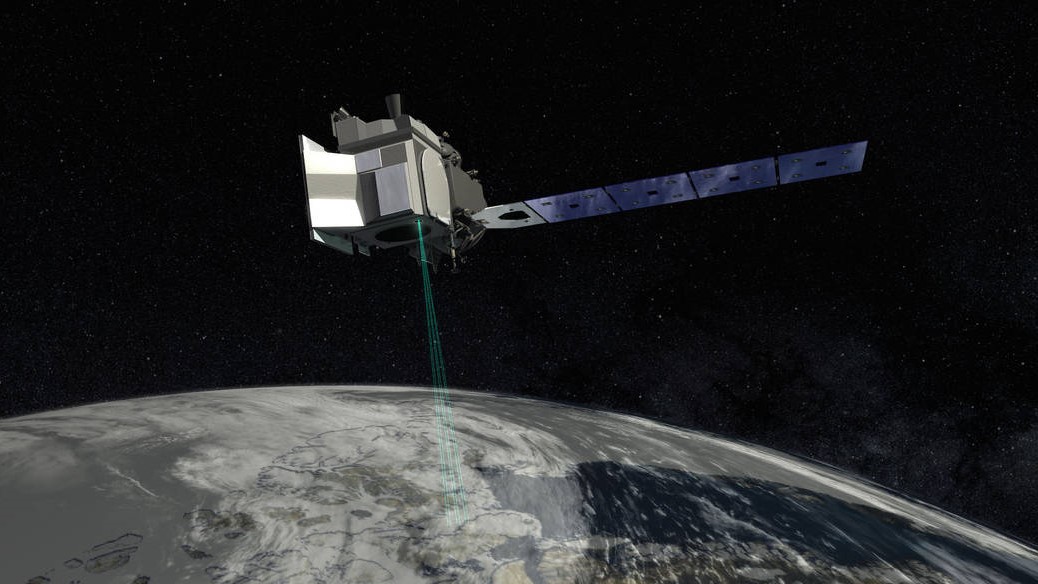Bright green laser lines shoot across night sky in Hawaii. What caused them?
A series of laser flashes recently lit up the night sky above Mauna Kea in Hawaii. Experts say the lasers were emitted by a NASA spacecraft.
A camera attached to a telescope on Hawaii's tallest peak recently captured footage of a series of eerie, bright green lines that shot across the night sky for just over a second. Experts say the unexpected light show resulted from a rapid burst of lasers fired toward Earth by a NASA spacecraft.
The laser lines appeared on Jan. 28, flashing across the sky one by one in just over one second. A video of the lasers was captured by the Subaru-Asahi Star Camera — co-owned by the National Astronomical Observatory of Japan (NAOJ) and Japanese news agency Asahi Shimbun — attached to the Subaru telescope on top of Mauna Kea, a dormant volcano on Hawaii's Big Island.
A time-lapse image of the lasers firing next to one another has drawn online comparisons with "digital rain," or the lines of green computer code that fall vertically down the screen during the Matrix movies. But instead of being a glitch in a simulated reality, the lasers were actually emitted by a device onboard NASA's ICESat-2 satellite, NAOJ representatives wrote on Twitter.
ICESat-2 tracks changes in the cryosphere — the part of Earth covered by solid precipitation including snow, sea ice, lake and river ice, icebergs, glaciers, ice sheets, ice shelves and permafrost — and cloud cover caused by human-driven climate change. To do this, the satellite uses an altimeter (a gadget that measures altitude) to fire bright lasers toward Earth's surface, then measures how long it takes for those lasers to bounce back to the satellite's dish. The altimeter onboard ICESat-2, known as the Advanced Topographic Laser Altimeter System (ATLAS), is one of the most powerful ever made: It is capable of firing 10,000 green laser pulses per second, which allows the device to collect measurements every 2.3 feet (0.7 meters) across Earth's surface, according to the ICESat-2 website.
Related: Bizarre blue blobs hover in Earth's atmosphere in stunning astronaut photo. But what are they?
The ethereal green lines that appear in the video are a result of some of these laser pulses, each of which is made up of around 20 trillion photons, lining up exactly with the camera's lens.
Perfectly positioned
The laser light show is not the only unusual spectacle to be captured by the Subaru-Asahi Star Camera in the past month.
Get the world’s most fascinating discoveries delivered straight to your inbox.
On Jan. 18 an eerily perfect "whirlpool" of light in the shape of a spiral galaxy briefly appeared above Mauna Kea. Experts later discovered that the luminous spiral was the result of sunlight shining through a cloud of frozen rocket fuel that was ejected by a SpaceX rocket, shortly after it deployed a military GPS satellite and before it came crashing back down to Earth.
The camera also captured another one of these "SpaceX" spirals shimmering over Hawaii in April 2022.
The summit of Mauna Kea is 13,803 feet (4,207 m) above sea level, which makes it the tallest point in Hawaii. Due to its lofty altitude, the Subaru-Asahi Star Camera has a near-uninterrupted view of the cosmos. As a result, it is in a prime location to detect unusual visual phenomena in the night sky.

Harry is a U.K.-based senior staff writer at Live Science. He studied marine biology at the University of Exeter before training to become a journalist. He covers a wide range of topics including space exploration, planetary science, space weather, climate change, animal behavior and paleontology. His recent work on the solar maximum won "best space submission" at the 2024 Aerospace Media Awards and was shortlisted in the "top scoop" category at the NCTJ Awards for Excellence in 2023. He also writes Live Science's weekly Earth from space series.




